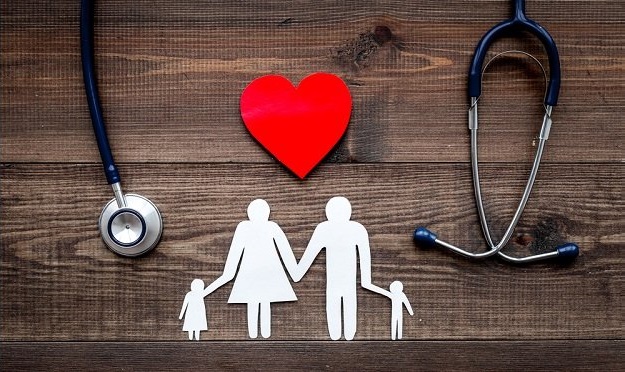 UnderCOBRA law, when an employee or dependent has a "qualifying lifeevent" that causes the loss of health insurance coverage, they haveat least 60 days to choose if they want to continue coverage.(Photo: Shutterstock)
UnderCOBRA law, when an employee or dependent has a "qualifying lifeevent" that causes the loss of health insurance coverage, they haveat least 60 days to choose if they want to continue coverage.(Photo: Shutterstock)
The current economic situation caused by COVID-19 safetymeasures has millions of people wondering how they can keep theiremployer's health insurance plan. Companies have been forced tofurlough or layoff their workforce until the economy improves. Infact, the U.S. economy lost more than 20 million jobs in April. Assuch, people want to know whether or not they can sign up for COBRAcontinuation coverage and if they will be able to afford it.
|What is the difference between a furlough and alayoff?
While they may seem similar, there is a difference betweengetting furloughed and being laid off.
|A furlough is usually temporary, with aspecific end date. However, a company can extend the furloughbeyond the initial period or later convert it into a layoff. Duringa furlough, the employee experiences a forced, unpaid leave ofabsence, but is still considered an employee.
|Related: 10 steps to take after a layoff orfurlough
|A layoff does not include a planned date forreturning to work. In a layoff, the employment relationship withthe company is over.
|How does this affect COBRA eligibility?
Under COBRA law, when an employee or dependent has a "qualifyinglife event" that causes the loss of health insurance coverage, theyhave at least 60 days to choose if they want to continue coverage.Examples of a qualifying event include:
- Job loss (for reasons other than gross misconduct)
- Reduction in work hours
- Divorce or legal separation from the covered employee
- Death of the covered employee
Employees who have been laid off are eligible for full COBRAbenefits.
|Unfortunately, it is not as straightforward for furloughedemployees. The employer decides the amount of COBRA benefitsavailable, usually after consulting its carrier and reviewing itsgroup health plan documents.
|Paying for COBRA
COBRA continuation coverage is usually paid for by the coveredindividual. The cost includes both their share and the employer'sshare (i.e., the entire premium). However, the individual hasoptions. They can pick and choose which coverages to keep and whoto cover (themselves or dependents), which could change the cost.There is also the possibility that the federal government couldassist during a time of crisis.
|In response to the COVID-19 situation, Congress is consideringexpanded COBRA options. A bill drafted by theHouse of Representatives proposes covering furloughed individualsin addition to those who were laid off. In its current form, thedrafted legislation would also cover up to the full amount (100percent) of the premium.
|The time frame for keeping COBRA due to COVID-19 has not beendetermined. Currently, COBRA law under normal (non-COVIDsituations) allows up to 18 months of continuing coverage, and theproposed legislation could keep that time frame or adjust it.
|Congress could use the American Recovery and Reinvestment Act (ARRA) passedduring the 2009 recession as a guideline for the COVID-19 relief.Under ARRA, people who chose COBRA received a 65 percent subsidyfor COBRA premiums and could keep coverage for up to 15 months.
|COBRA election relief during COVID-19
On April 29, 2020, the IRS and the Department of Labor published relief rules for COBRA filing.According to the notice, employers "must disregard the period fromMarch 1, 2020 until sixty (60) days after the announced end of theNational Emergency … for all plan participants, beneficiaries,qualified beneficiaries, or claimants." This rule applies to:
- 30-day period (or 60-day, if applicable) for special enrollmentunder ERISA
- 60-day election period for COBRA continuation coverage
- Date for making COBRA premium payments
- Date for people to notify the plan of a qualifying event
- Date a group health plan sponsor or administrator has toprovide a COBRA election notice
Given the ongoing uncertainty, contacting an HR representative,benefits administrator, or an employment law professional is highlyrecommended. Your healthcare benefits and coverage matter.
|Bo Armstrong is a national conferencespeaker and author of numerous white papers and articles on thehealth care benefits industry. As DataPath's chief marketing officer, Bo focuseson identifying emerging market trends within the benefits industryand advocating for customers and their needs withinDataPath.
Read more:
Complete your profile to continue reading and get FREE access to BenefitsPRO, part of your ALM digital membership.
Your access to unlimited BenefitsPRO content isn’t changing.
Once you are an ALM digital member, you’ll receive:
- Critical BenefitsPRO information including cutting edge post-reform success strategies, access to educational webcasts and videos, resources from industry leaders, and informative Newsletters.
- Exclusive discounts on ALM, BenefitsPRO magazine and BenefitsPRO.com events
- Access to other award-winning ALM websites including ThinkAdvisor.com and Law.com
Already have an account? Sign In
© 2024 ALM Global, LLC, All Rights Reserved. Request academic re-use from www.copyright.com. All other uses, submit a request to [email protected]. For more information visit Asset & Logo Licensing.








